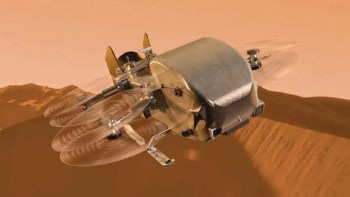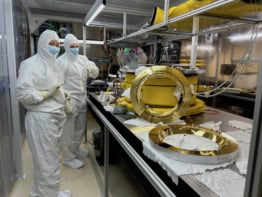New observations of Charon -- Pluto's moon -- have revealed that it may not have an atmosphere. Two international teams of astronomers, led by James Elliot of the Massachusetts Institute of Technology in the US and Bruno Sicardy of the Observatoire de Paris in France, came to this conclusion by studying how Charon blocks out light from a distant star. The technique has also let them determine the size of Charon with unprecedented accuracy.

The technique used to study Charon’s atmosphere is known as “stellar occultation” and can be used whenever a body passes between the Earth and a distant star. It is a powerful tool for measuring the properties of the occulting body. In the latest research, the two teams of astronomers used telescopes in Chile and Argentina to study how the 15-magnitude star UCAC2 26257135 was occulted by Charon on 11 July 2005 (Nature 439 48 & 52).
The results indicate that Charon has virtually no gaseous mantle. Moreover, the two teams measured Charon’s radius to be between around 603 and 606 kilometres plus or minus between 5 and 8 kilometres . These results allowed the astronomers to calculate that Charon’s density is 1.71 that of water, suggesting that it is an icy-rocky body.
The findings could help scientists understand how Pluto and Charon formed. Many astronomers believe that Charon, which was discovered in 1978, is a satellite of Pluto. But because Charon is relatively big — about half the size of Pluto — others argue that two bodies form a double-planet system that was created at the same time. The debate is made all the more tricky because astronomers are currently considering whether to redefine the term “planet” following the discovery of several objects that are similar in size to Pluto.
Meanwhile, astronomers from the Harvard-Smithsonian Center for Astrophysics in the US have determined that Pluto has a surface temperature of about 40 Kelvin, which is 10 Kelvin colder than previously thought. The temperature at Charon’s surface is about 60 Kelvin.



